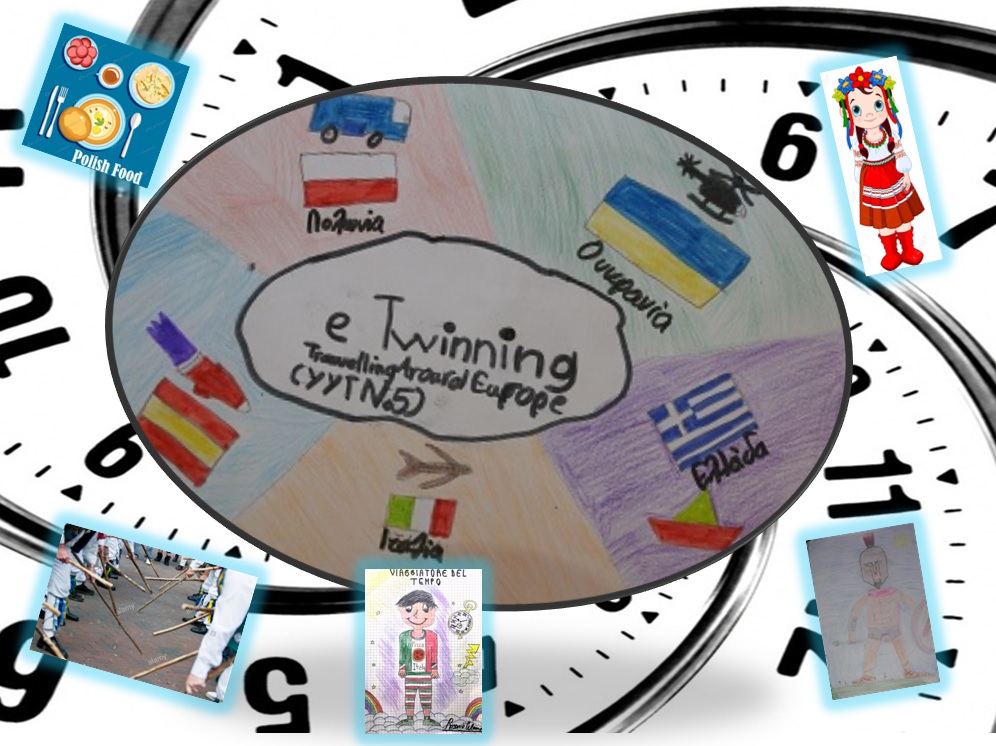After the pupils were split in transnational working groups and prepared the electronic "passport" of their school, they started their enchanting journey to the folklore and culture of the five countries of cooperation. In Ancient Greece, they met Pythagoras, made their "Pythagorean cup ", and with a paper boat they set route to Italy of 1950. They sang the famous Italian song "Volare" and flew with a paper plane to Catalonia. They landed around in 1150 AD, in a banquet of Count Berenguer IV, where they danced the traditional "Ball de Bastons". From there, with a rocket, they travelled to Poland of nowadays where they cooked the delicious traditional food, pork chops. Finally in Ukraine they made and wore the characteristic wreath of flowers that accompanies the traditional costume, while learning about the stories and legends that are related with it. A journey into space and time ... a multidimensional journey into sciences, art, folklore of the various cultures!
Activities - How we Worked:
The activities of the project were:
A) Logo. The logo of the project was made jointly. The schools created a different part of it, and the result was a collage of all the suggestions.
B) Online Games. The students played and competed each other in the online game "Time Machine" about the history of the EU.
C) The journey to cultures. During the project the students traveled to the five countries of cooperation and learned about their culture heritage. It is an interdisciplinary approach to European cultural heritage through the active participation of students (all activities were selected, presented, accomplished by students). The journey of the "Young Time Travellers" included five stops which were as many as the participating countries. In each country - stop, the pupils of the country selected an activity related to the culture / folklore / scientific achievements, etc. of their homeland, which the other pupils of the other schools had to accomplish in order to earn a stamp on their electronic passport. The stamps were made by the pupils of the host country. The journey were continuing when the students of the host school prepared and sent a letter with post to next school, in which they enclosed the mean of transport they had chosen and had created and with which the journey would be continued. The purpose of the schools was to have collected as many stamps on their passport as they could until the journey came to its end.
